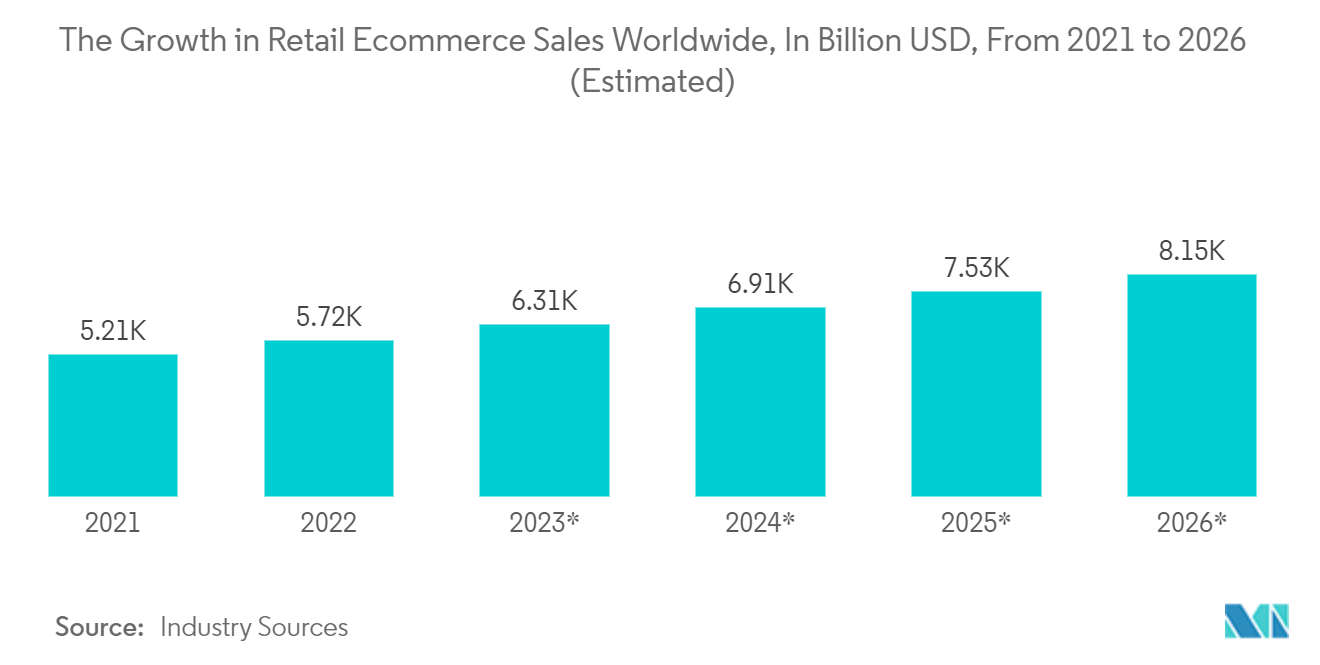Market Trends of Retail 3PL Industry
Asia-Pacific Region Driving the Market
Asia is the world's most populous continent, and China and India account for the majority of e-commerce transactions. E-commerce is a primary driver of third-party logistics growth. Due to the increased use of logistics across numerous industries, including as e-commerce, construction, retail, automotive, food & beverage, and hospitality, the Asia-Pacific third-party logistics industry is booming. During the forecast period, the Asia-Pacific third-party logistics market is anticipated to benefit from the introduction of technological advancements such as transportation management systems, supply chain management, international trade logistics systems, and enterprise resource planning in the logistics industry.
The Asia-Pacific third-party logistics market is seeing significant expansion driven by the rising e-commerce industry. China is currently the largest exporter of goods and the centre of the global manufacturing industry. The largest markets in the e-commerce sector are also rising in other nations, like Japan and India. In order to acquire a competitive edge, the major market participants, such as Amazon, Alibaba, and Rakuten, are concentrating on enhancing their customer service by providing same-day delivery and simple returns. The infrastructure for logistics services is also being developed by the companies, which is expected to drive the Asia-Pacific third-party logistics market over the forecast period.
In the Asia-Pacific area, DHL International GmbH (a subsidiary of Deutsche Post AG) is the market leader with an estimated market share of between 2% and 7%. Through their third party logistics services, which include express services, supply chain solutions, warehousing & distribution, and freight transportation, the company has achieved remarkable sales.

Growth in E-commerce
In 2023, it is anticipated that the worldwide e-commerce market would reach USD 5.7 trillion. It is anticipated that this number will increase over the next years, demonstrating how valuable borderless e-commerce is turning out to be for online merchants. Only 17.8% of sales two years ago came from online purchasing. The e-commerce market share is anticipated to expand by 2 percentage points to 20.8% in 2023 from the current figure. Growth is anticipated to continue, with a projected peak of 23% by 2025 a rise of 5.2 percentage points in just five years. Retail market share will increase as global retail sales growth keeps rising. By 2023, eMarketer and Statista's study projects that online retail sales will amount to USD 6.51 trillion, with e-commerce websites accounting for 22.3% of all retail sales. With 46.3% of all retail e-commerce sales globally and slightly over USD 2.8 trillion in total online sales in 2022, China will continue to dominate the global e-commerce sector. Additionally, it has 842.1 million digital purchasers, or 39.4% of all digital customers worldwide, making it the largest market. In 2022, the US e-commerce market is anticipated to grow to more than USD 904.9 billion, slightly more than China's. With 4.8% of the retail e-commerce sales share, the United Kingdom is the third-largest e-commerce market after China and the US. Japan (3%) and South Korea (2.5%) are the nations that come after the UK.


